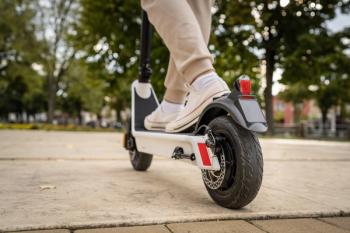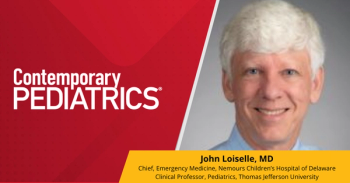
John Loiselle, MD, FAAP, highlights pediatric musculoskeletal injuries in the office, acute care setting
John Loiselle, MD, FAAP, discusses pediatric musculoskeletal injuries, focusing on growth plates and age-specific anatomy at the 2024 AAP Conference.
At the 2024 American Academy of Pediatrics National Conference & Exhibition, John Loiselle, MD, FAAP, chief of Emergency Medicine at Nemours Children's Hospital of Delaware, delivered an insightful discussion on the top 10 musculoskeletal complaints in pediatric patients. His focus centered on how the developmental anatomy of children predisposes them to certain conditions, distinctly different from adults, and what pediatricians need to know to diagnose and manage these injuries effectively.
Loiselle explained that children are more susceptible to certain musculoskeletal injuries due to the presence of growth plates, which are absent in adults. “Children have growth plates that adults don't have, and so those are going to start to hypertrophy during the growth spurt,” he noted. This developmental process places children at risk for specific injuries, such as a slipped capital femoral epiphysis, where the pressure from growth and weight affects the growth plate in the hip joint.
He also emphasized that musculoskeletal issues frequently present in primary care settings rather than being immediately referred to orthopedic surgeons. “Most of us think, well, they're all going to go to the orthopedic surgeon, but they do not present to the orthopedic surgeon,” Loiselle pointed out, highlighting the importance of pediatricians in identifying which cases require further specialist care.
During his talk, Loiselle discussed the range of injuries children may experience based on their age and growth phase, covering common areas such as the ankle, elbow, and wrist. “I will talk about the different types of conditions in or injuries that may occur in that ankle,” he said, stressing the need to consider age-specific anatomy when evaluating a child’s musculoskeletal complaints.
Loiselle provided practical advice for pediatricians on how to approach physical exams in children, cautioning them to start with careful observation. “I spend a lot of time focusing on the observation part of the evaluation, seeing what the child is able to do spontaneously with that extremity,” he advised, noting that jumping too quickly into a hands-on exam can exacerbate a child's pain unnecessarily.
Through this presentation, Loiselle aimed to equip pediatricians with the knowledge to assess and manage pediatric musculoskeletal complaints effectively, minimizing chronic problems and ensuring timely referrals when necessary.
Newsletter
Access practical, evidence-based guidance to support better care for our youngest patients. Join our email list for the latest clinical updates.








